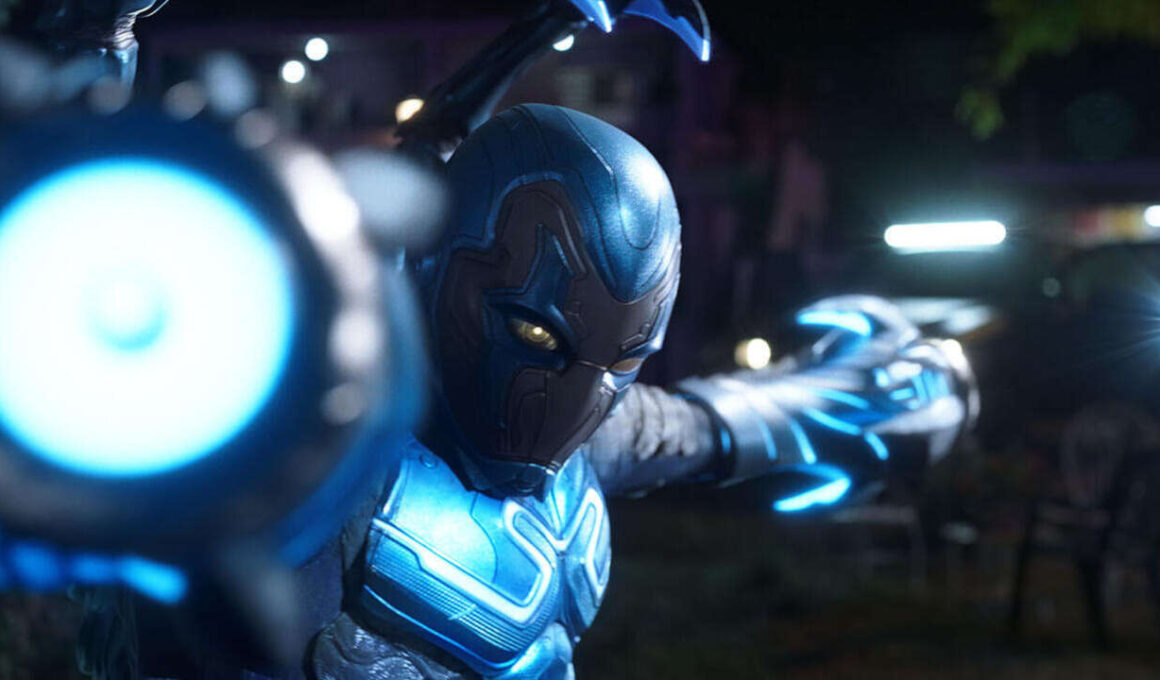Although there is still a long way to go, the recent representation of Hispanics and Latinos in comic book movies has been a delight for those who grew up wishing to see themselves on-screen as these larger-than-life superheroes. In recent years, we’ve seen Xochitl Gomez playing America Chavez in Doctor Strange in the Multiverse of Madness and Xolo Maridueña playing Jaime Reyes in Blue Beetle, to name just a couple. From breaking stereotypes to creating diversity in comic book films, Hispanic and Latino representation on-screen paves the way for more creative and heartfelt storytelling.
Having these characters hit the big screen showcases the Hispanic and Latino communities in ways that break what was a fairly consistent portrayal of negative stereotypes in Latino communities. For years, Hispanic and Latino characters were an easy mark to be shown as criminals, undocumented immigrants, or merely bad guys waiting to be obliterated by the hero (see 2019’s Rambo: Last Blood). And it’s not just movies: As pointed out by The Gateway, racist stereotypes can be seen in kid shows such as Handy Manny, which has a Latino who’ll drop what he’s doing and work for cheap. It also doesn’t help that a lot of the time, Latinas are treated as sex objects, as seen in shows like Modern Family.
2023’s Blue Beetle is a phenomenal example of how a Hispanic character can change up what audiences can expect from big-screen superheroes. The movie captures many aspects of what makes Hispanic households unique and how those aspects directly impact a person’s character. In the film, multiple generations of Jamie Reyes’ (Maridueña) family live under the same roof, capturing how chaotic and charming they can be–having an uncle who’ll believe anything he reads on the internet and a loving grandma who’ll go above and beyond whenever you need her, for instance. The film hit on every note about why our culture is beautiful. Despite having so many cooks in the kitchen, the family sticks together, supports each other, and thrives. Each member contributes in their own way to make their family special.

Not once were any of the characters in the film subjected to stereotypical tropes. In fact, whenever they did something common in the community, it was treated with love and respect, rather than made into a cheap punchline. As a viewer, I couldn’t help but smile when I saw them grab tacos and eat together as a family within the first 30 minutes of the film. Despite the Hispanic and Latino communities being often associated and stereotyped to be thorough taco enthusiasts, it was evident the director and cast were trying to light-heartedly showcase the importance of food in the culture.
The film’s representation wasn’t just a matter of the actors on screen. Director Angel Manuel Soto is also of Hispanic descent, which is an important factor–having someone who’s part of the community at such a high level in the creative process can help ensure that the smallest details are accurate and treated with the respect they deserve. Without someone like him behind the camera, a lot of the cultural moments could have easily been lost.

Although there aren’t many Hispanic and Latino characters in live-action DC films thus far, Blue Beetle instills hope for more. Now that James Gunn is resetting the live-action DC universe–and has said Maridueña’s Blue Beetle will be continuing forward in the new continuity–there’s a ready-made way to continue building on that representation. Additionally, there are a number of Hispanic and Latino characters throughout the DC Comics canon–Bane and a pair of Green Lanterns, Jessica Cruz and Kyle Rayner, to name a few–that would allow for even more Hispanic actors in its new universe.
Over in the Marvel Cinematic Universe, there’s been a slow introduction of more Latinos in recent years. Some of the first people to step into the limelight were Xochitl Gomez as America Chavez and Oscar Isaac as Marc Spector in Moon Knight. Although, ultimately, these characters have yet to meaningfully showcase our culture, it is still having Latinos be such prominent characters without falling into the trap of being stereotypes.

Although they weren’t Hispanic or Latino, Marvel did a great job of highlighting Mesoamerican culture in 2022’s Black Panther: Wakanda Forever. The studio cast Tenoch Huerta, an actor born in Mexico, to play Namor. What’s notable about this adaptation of him is that it was heavily inspired by the Maya rather than his usual Greek mythology roots. Seeing a popular movie studio pay homage to a part of history that doesn’t usually get much attention was refreshing to see.
Though we’ve seen Latinos and Hispanics make their way more and more to the big screen, the same can’t be said about the small screen. As pointed out by a Deadline report, there’s been a 40% decrease in Hispanic representation year-over-year, and only 3% of leads in mainstream shows were Hispanic, which is why any kind of proper representation in the community is important to showcase.
One upcoming character that has potential to make a considerable impact on the community is Pedro Pascal’s Reed Richards in the Fantastic Four reboot, which is scheduled to release next year. A common factor that many of the previously mentioned characters share is that they’re all fighters. Although it’s cool, it may not be the best message to send. What makes Reed stand out is the fact that he’s a renowned scientist. In the comics, he earned various degrees from prestigious schools, such as Harvard University, where he earned a PhD in Physics and Electrical Engineering.

This is an important facet to factor in because it’s extremely rare to see Hispanics and Latinos portrayed as academic achievers. Having Pascal play Reed further shows that our people can achieve such academic heights and sends a positive message rather than once again playing into the stereotypes we so often see.
Another reason Pascal’s Reed Richards could be significant is because it could further highlight how important family is to the culture at large. In the comics, the Fantastic Four is often called the “Marvel’s First Family,” and it’s something Marvel Studios chief Kevin Feige has said repeatedly when discussing the film. Even though Pascal is currently the only confirmed Latino in the cast, he can still potentially showcase how important family is to people who may not be part of our culture which can be weaved into the story to create more dynamic and interesting plots for the film.
The representation isn’t solely tied to live action, either. Lately, Marvel has also been introducing more Hispanics and Latinos to its animated projects, with the most popular being Miles Morales and Miguel O’Hara from the Spider-Verse films. Like Blue Beetle, the Spider-verse films capture the charm of Hispanic households and further emphasizes how important family is in the culture. On the other hand, it also shows that Hispanics like O’Hara can play well-rouded villains without being subjected to harmful stereotypes, all while showing it’s possible for Hispanics to hold positions of power.

Despite there not being many Hispanics and Latinos in live-action comic book films so far, the foundation has been set. As a community, we are slowly but surely making our way into these films and shows, and I can’t help but be proud of the community at large because it’s creating more opportunities for Hispanics and Latinos voices to be heard and their stories to be told.








